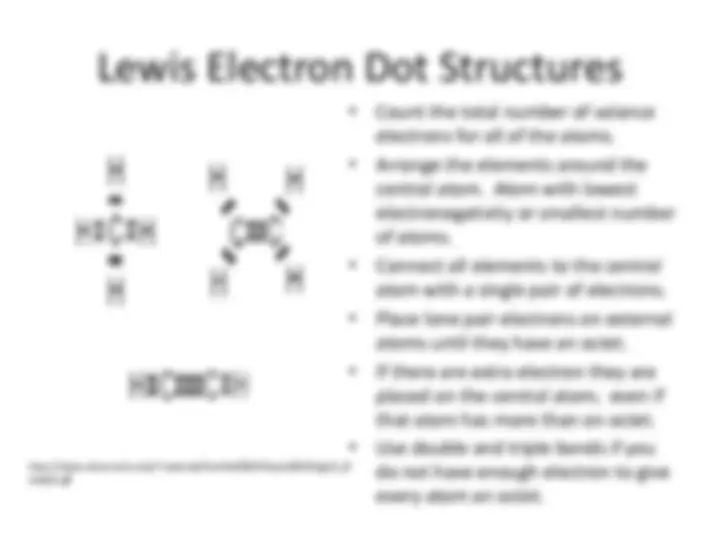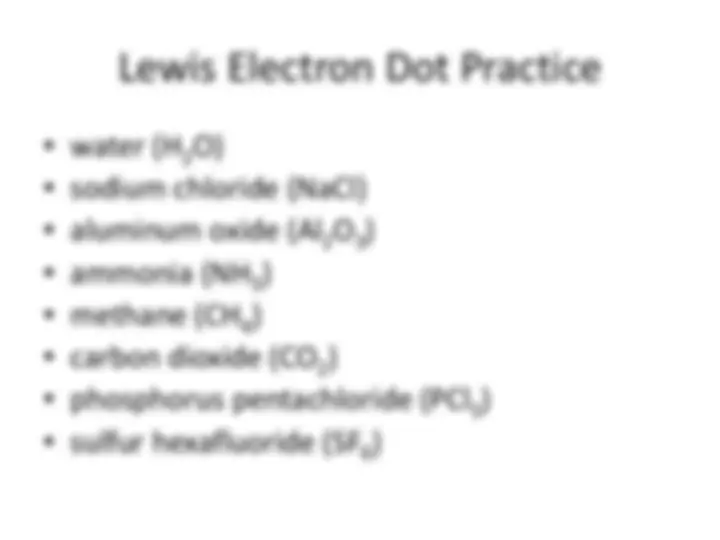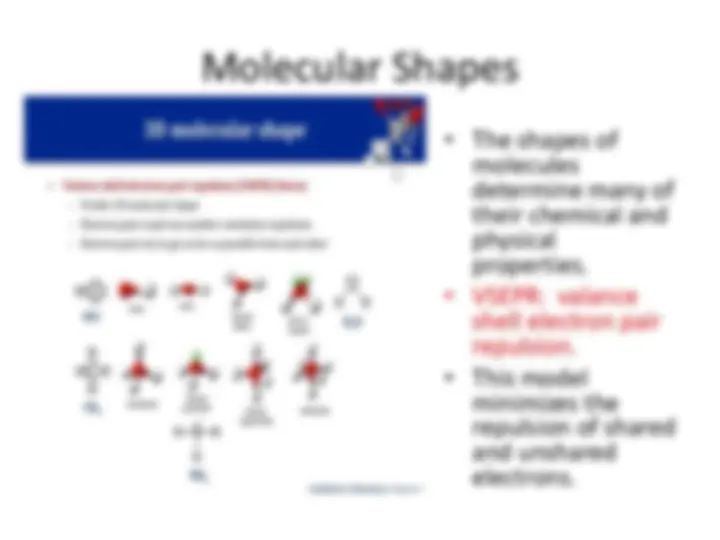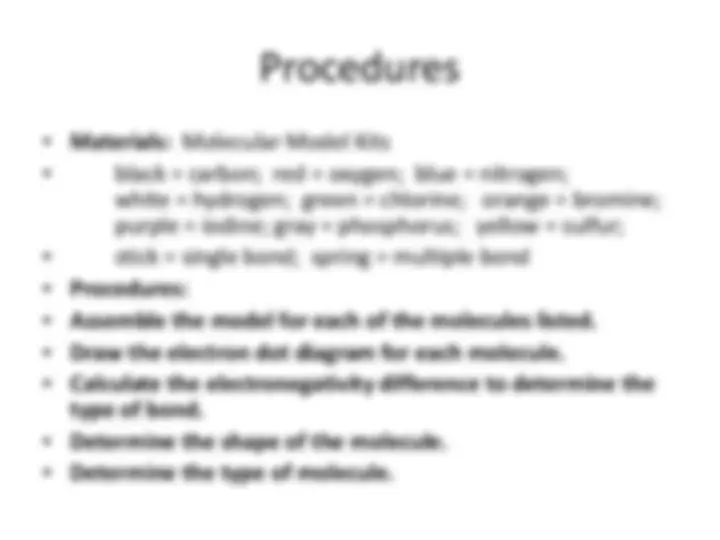








Study with the several resources on Docsity

Earn points by helping other students or get them with a premium plan


Prepare for your exams
Study with the several resources on Docsity

Earn points to download
Earn points by helping other students or get them with a premium plan
Community
Ask the community for help and clear up your study doubts
Discover the best universities in your country according to Docsity users
Free resources
Download our free guides on studying techniques, anxiety management strategies, and thesis advice from Docsity tutors
An introduction to covalent compounds, focusing on the concepts of electronegativity, Lewis electron dot structures, and molecular shapes. Students will learn how to determine the type and shape of covalent molecules using these models. Examples of various molecules, including water, sodium chloride, and methane, are provided for practice.
Typology: Slides
1 / 10

This page cannot be seen from the preview
Don't miss anything!







http://www.meta-synthesis.com/webbook/30_timeline/pauling.jpg
2
2
3
3
4
2
5
6